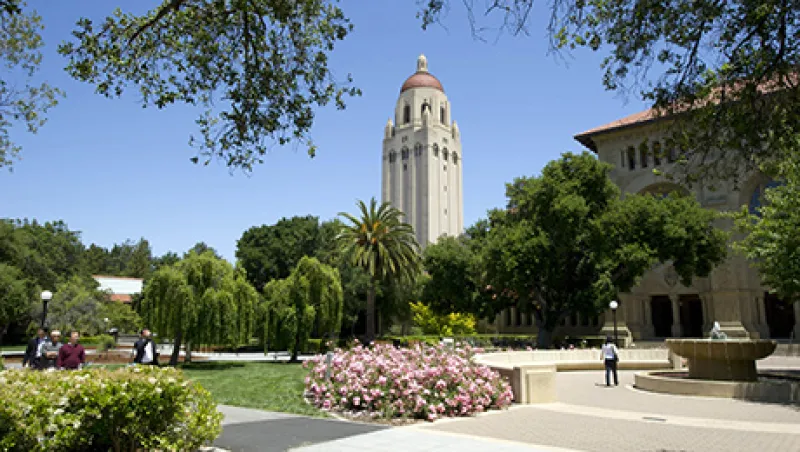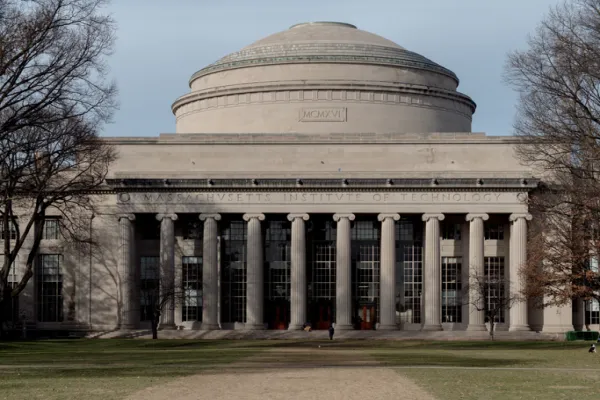On May 6 Stanford University announced its decision to divest from coal companies. Student advocates rejoiced, and investors took notice. As the deputy director of the Stanford Steyer-Taylor Center for Energy Policy and Finance, my inbox quickly filled with commentary. Although the reactions ranged from euphoric to critical, there were two consistent threads: misinformation and misunderstanding.
Knowing what Stanford did and why it did it will help inform what should come next, not only for Stanford but also for other large endowments and asset owners.
Stanford’s Board of Trustees (BOT) passed a resolution mandating that the endowment divest all directly held investments in any publicly listed company whose principal business is the mining of coal for use in energy generation. Stanford will also send letters to its investment managers recommending that they also divest their directly held investments in these companies. And Stanford will vote its proxies in support of this resolution.
Although the definition of “principal business” has yet to be specified in financial terms, the resolution will not apply to companies whose main activity is the mining of coal for steel production.
The BOT doesn’t manage the endowment. That’s the job of the Stanford Management Co. (SMC). SMC manages the university’s endowment and other financial and real estate assets, which together are referred to as the merged pool and amounted to approximately $21.9 billion as of June 30, 2013. The BOT appoints the Board of Directors that governs SMC. So in effect, SMC serves at the pleasure of the BOT.
SMC will apply the BOT’s resolution by screening public equities of eligible companies that are held in separately managed accounts, funds in which SMC has the ability to direct a manager to exclude specific public equities. The resolution does not apply to commingled funds, the vehicles through which much of public equity exposure is obtained for many investors like Stanford. The resolution also does not cover SMC’s ownership of private equities. As of June 30, 2013, the strategic target for public equities in the merged pool was 25 percent — which includes both separately management accounts and commingled funds — with the remaining 75 percent held in private equity, absolute return strategies, natural resources, real estate and fixed income.
So why did Stanford divest from coal?
To answer this question, it’s helpful to look back at Stanford’s history with regard to investment responsibility. In 1971, in response to civil rights and anti–Vietnam War demonstrations, Stanford’s BOT became the first major academic institutional governing body to create a mandate, structure and process for addressing allegations of what has been dubbed corporate substantial social injury. This structure evolved into what is now known as the Advisory Panel on Investment Responsibility and Licensing, or APIRL, a 12-member body of Stanford students, faculty, alumni and senior administrators. The APIRL receives requests from the Stanford community, then accordingly reviews, researches and drafts recommendations to the Special Committee on Investment Responsibility, a subcommittee of the BOT that reviews, edits and votes on recommendations to present to the full board.
No other major university that has made public statements against student-led divestment movements has this structure. It is also worth noting that whereas SMC responds to requests for information from the APIRL, SMC does not make determinations on investment responsibility requests.
The call for divestment originated with the students, through their Fossil Free Stanford campaign, and ended with the BOT. The APIRL and the Special Committee reviewed the students’ original demand of divestment of 200 oil, gas and coal stocks and, based on their research, made an modified recommendation to the BOT, which voted to approve the resolution.
The president and the BOT wanted to find a way to say yes. Divesting from coal companies would have no material impact on SMC’s returns — coal companies make up less than 1 percent of major public market indexes and haven’t been performing well lately — and doing so would not obviously violate the university’s investment responsibility policy. So the BOT agreed to forsake coal.
It was a symbolic gesture, and as with any compromise, it was imperfect. Wiping coal from the financial engine that keeps the campus going raises questions about the priority of carbon capture and sequestration research at Stanford and, as many have noted, divestment won’t have any direct impact on reducing carbon emissions. If Stanford is serious about addressing climate change, what comes next?
By giving the Fossil Free Stanford movement a victory, the university demonstrated the significance of climate change as an existential threat. The move also demonstrates the limitations of divestment for changing corporate behavior or shifting investment in fossil fuels to lower-carbon sources of energy at scale. If our goal is a rapid, dramatic and cost-effective transition to a low-emissions economy, we need to do more than find high moral ground and stigmatize fossil fuel companies.
Divesting from coal is a one-off event for SMC. So too will be any future divestitures or investment mandates. SMC will continue to make its investment decisions based on the same information it had before. And its bright and capable employees with job titles including the words “investment responsibility” will still be confined to proxy voting and damage control. Stanford can’t navigate climate risk by relying on the APIRL to tell SMC what to sell or buy. SMC's investment professionals need relevant data on which they can make investment decisions. And they need to be proactive.
So how can SMC further demonstrate leadership on climate to other endowments and long-term investors?
It can employ sophisticated climate risk analysis across its entire portfolio. The BOT should require SMC to adopt a framework for quantifying carbon exposure in the endowment and to report that exposure annually. Harvard, perhaps in response to the bad press it got for scoffing at divestment, announced it would become a signatory of the United Nations–supported Principles for Responsible Investing and the Carbon Disclosure Project, each internationally recognized as a leader in best-practice guidelines and disclosure. Other leading organizations on climate risk, data and disclosure include Ceres (via its Investor Network on Climate Risk), the Carbon Tracker Initiative, Risky Business and the Sustainable Accounting Standards Board (SASB). Bloomberg is incorporating these kinds of data in its terminals. But the organizations working to better measure and manage climate risk have a ways to go before investors have timely access to high-quality sustainability data on which they can make investment decisions across all asset classes. Their work will progress faster if investors demand and pay for it.
SMC can dedicate staffing resources to identifying low-carbon investment opportunities whose risk-adjusted return profile meets or exceeds comparable investment alternatives. Included in Harvard’s April 7 “Confronting Climate Change” announcement was the call for a $20 million Climate Change Solutions Fund. Increasing research budgets for clean energy innovation is critical, and Stanford is doing similar things and arguably more (see the Precourt Institute for Energy, the Global Climate & Energy Project and the TomKat Center for Sustainable Energy). But what I’m talking about is confronting climate change inside the endowment corpus. SMC should equip its investment professionals with knowledge to identify low-carbon opportunities within their asset classes and establish incentives to prioritize those investments, provided they meet or exceed comparable alternatives.
Climate change mitigation and adaptation present investment opportunities in many different forms and across all asset classes. The International Energy Agency estimates that an additional $36 trillion in clean energy investment is needed through 2050 — an average of $500 billion per year by 2020, ramping up to $1 trillion per year by 2030. This so-called clean trillion target has helped bring the power of finance to clean energy and energy-efficiency solutions. Investors are putting money to work in new financial instruments like green bonds and yieldcos. Policymakers are also responding to the opportunity for climate finance. The Internal Revenue Service just proposed a change to income tax regulations to allow certain solar projects to be financed as real estate investment trusts. The MLP Parity Act, which would give clean energy access to master limited partnerships, a corporate structure with tax advantages presently only available to fossil industry projects, has bipartisan support in Congress.
Low-carbon investment opportunities don’t have to require a concession on returns, but for now at least they may require higher transaction costs in the form of acquiring new expertise and embedding that expertise across asset classes; they also require a long-term investment horizon. SMC and other large endowments and asset owners can afford all three.
Natural resources isn’t just an asset class. It’s a driver of risk and opportunity that touches nearly every investment across our portfolio. McKinsey & Co. sustainability practice veterans Matt Rogers and Stefan Heck, who is now a research fellow at the Steyer-Taylor Center, make a clear and compelling case for this suite of investment opportunities in their recently published book Resource Revolution. Stanford football fans like to taunt opponents with the chant “fear the tree,” a nod to the university’s mascot. If Stanford takes these steps, other universities should do more than fear the tree. They should follow it.
Alicia Seiger is the deputy director of Steyer-Taylor Center for Energy Policy and Finance at Stanford University in Palo Alto, California.
For more on the college and university movement to divest from fossil fuels, see II’s video The Ethics of Climate Change and the Divestiture Movement.






